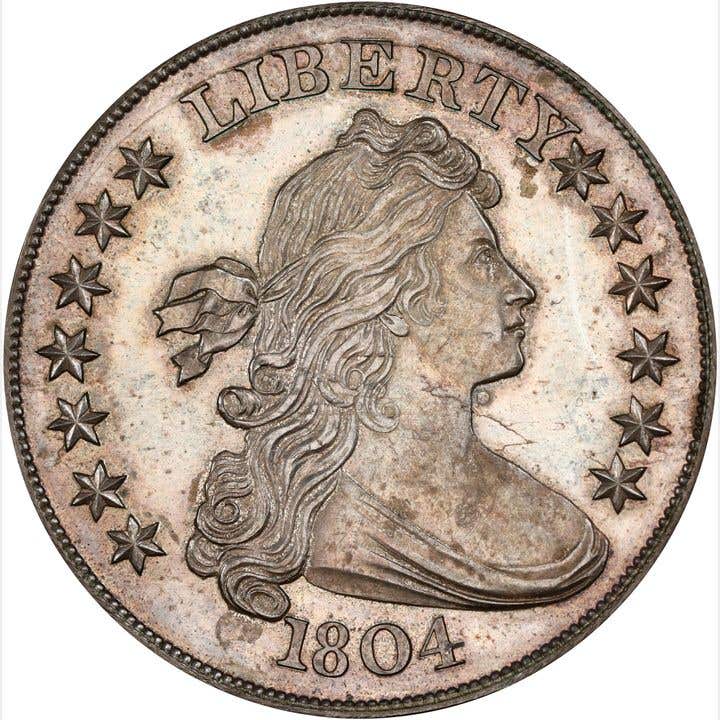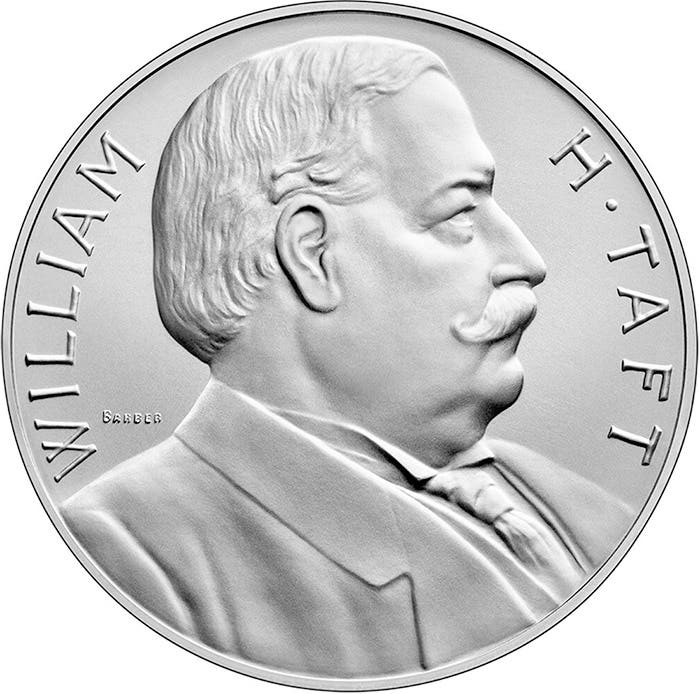Barber Dimes Poised to Rise in Value
In my 65+ years of experience with U.S. coins, I’ve always had a fondness for Barber-designed coins, particularly the silver pieces. The reason for this fondness is not difficult to…
In my 65+ years of experience with U.S. coins, I’ve always had a fondness for Barber-designed coins, particularly the silver pieces. The reason for this fondness is not difficult to determine: Although scarce, they were still found occasionally in circulation when I started collecting. Thus, to me as a junior collector, Barbers were the oddballs. The dimes looked nothing like the Mercury dimes so prevalent at the time, or the Roosevelts that were still relatively new in the early 1950s.
I knew from my 1958 Red Book (A Guide Book of United States Coins) that the Barber silver pieces were designed by Charles E. Barber, Chief Engraver of the Mint. What I didn’t know at the time was how he got the assignment, or why the previous Seated Liberty design was changed.
As for the latter question, the Seated Liberty design had been on the dime since 1837, and its 54-year tenure had long since worn out its welcome. Several years before its actual demise, the 1876 The Galaxy magazine published the following:
Why is it we have the ugliest money of all civilized nations? The design is poor, commonplace, tasteless, characterless, and the execution is like thereunto. . . . One reason for this is that the design is so inartistic, and so insignificant. That young woman sitting on nothing in particular, wearing nothing to speak of, looking over her shoulder at nothing imaginable, and bearing in her left hand something that looks like a broomstick with a woolen nightcap on it—what is she doing there?
In other words, by the early 1890s, it was time for a change. To effect this change, a design competition featuring the best artists in America was envisaged, but the contacted artists balked at what they considered too little time to prepare the entries and too little money for their efforts. In reaction, the Treasury held a public competition judged by famed sculptor Augustus Saint-Gaudens, gem and seal engraver Henry Mitchell, and Charles E. Barber.
The outcome of this competition was even less satisfactory than the one that would have involved the ten American artists. Mint Director Edward O. Leech pronounced it a “wretched failure,” as only two designs out of 300 submissions received even an honorable mention.
So, who was left to do the designs? Mint Engraver Barber, of course. The result for the dime was a bust of Liberty facing right on the obverse and the continuation of the familiar reverse from the Seated Liberty dime.
According to Wikipedia, “Public and artistic opinion of the new pieces was, and remains, mixed. In 1915, Mint officials began plans to replace them once the design's minimum term expired in 1916.”
No matter what you think of the design, whether you love it or hate it with a passion, Barber dimes are worthwhile to own, and it’s relatively easy to put together a set. This is particularly true if you’re satisfied with circulated specimens. Of course, it’s undoubtedly true that some Barber dimes are more likely to increase in value than others. In this article, I’m going to tell you about several worth considering for future increases in value.
I’m tempted to say that the best dates for appreciation are the series’ keys and semi keys, which include the 1892-S, 1893-O, 1894-O, 1895, 1895-O, 1895-S, 1896-O, 1896-S, 1897-O, 1901-S, 1903-S, 1904-S, and 1913-S. These are all low-mintage dates, which always tend to be in demand.
For the most part, however, the dates I’m going to list are perhaps not as well recognized for scarcity as the dates listed above. Thus, they may be considered “sleepers” poised for appreciation.
1895-S (1,120,000 minted). Despite its relatively sizeable mintage, David Lawrence (The Complete Guide to Barber Dimes) wrote about this date, “Available in full-rimmed Good, but tough in any higher grade. Possibly the scarcest date (excluding the 1894-S) in MS64 and above.” In A Guide Book of Barber Silver Coins, David Bowers noted, “Very few exist in this rarified category” [MS65].
According to the Numismatic News “Coin Market,” the 1895-S is worth $42 in G4 on its way to $3,150 in MS65. A decent F12 should sell for around $200. Actually, the MS65 price doesn’t seem all that outrageous for such a scarce coin in that grade. The problem is going to be finding one for sale.
On eBay, I found 95 1895-Ss listed, ranging in grade from almost unrecognizable (Fair 2 perhaps) to an NGC MS65. The latter was listed for $3,281.35 and was nice except for the color, which didn’t appeal to me. Several coins in the AG-G category were priced around $35, with one ANACS G4 for $45. A PCGS F15 1895-S was listed at $240, which may be a decent price.
Finally, one of the nicest coins listed on eBay was an AU58 1895-S graded by PCGS. However, its $600 price strikes me as a bit much for a coin that “Coin Market” says is worth $370 in AU50 and $450 in MS60.
1898-O (2,130,000 minted). With a mintage north of two million, it’s hard to believe that this is a good date. However, Lawrence pronounced it “Much scarcer than its mintage suggests. In fact, one of the toughest dates in the series, especially in well-struck condition.” Similarly, Bowers called it “. . . one of the handful of top rarities among Barber dimes in grades MS-60 or higher.”
Despite this, “Coin Market” values range from $12 in G4 to $3,600 in MS65. A decent F12 example should set you back about $75, if you can find one. With VF20s worth $140, I found a few on eBay graded either VF30 or -35 for prices not much more than this. I must admit I’m tempted to buy a few.
1900-O (2,010,000 minted). Here’s another dime with more than two million minted that should be more common than it is. Lawrence called it “The most underrated coin in the set. In circulated grades above VG its scarcity rivals the 1895-O. In mint state it is even tougher.” Bowers wrote, “The 1900-O is surprisingly rare in view of its mintage.”
Yet, values for this underrated, rare date range from $14 in G4 to $3,300 in MS65. F12 and VF20 values are $160 and $185, respectively. I found several PCGS-graded examples on eBay for what appear to be decent prices.
1903-S (613,500 minted). This is one of the semi keys in the list above, so it won’t be a sleeper. About the 1903-S Lawrence wrote, “Low mintage makes this one of the traditionally scarce dates of the series. It is in demand in all circulated grades from VG to AU.”
Values range from $110 in G4 to $2,400 in MS65. In F12 it’s a $315 coin. I found several examples on eBay, but no bargain prices.
1909-D (954,000 minted). This is another low-mintage date in the latter part of the series, but the values in “Coin Market” don’t fully reflect its scarcity. Lawrence wrote, “Scarce above Good and collector demand always exceeds supply. . .. Specimens from XF to MS63 always sell quickly.”
Values range from a shockingly low $7 in G4 to $1,800 in MS65. Its F12 value is $60, with a VF20 worth $95. I found several decent 1909-Ds on eBay, some with reasonable prices.
1909-S (1,000,000 minted). The 1909-S has a very similar mintage to the 1909-D, and Lawrence called it one of his favorite dates. “Demand is so strong that you are lucky to find one in any grade above Good on the bourse floor. . .. Though its scarcity is no secret, this date is still underpriced in mint-state.”
Values range from $11 in G4 to $2,100 in MS65. In F12 it lists for $83, and it’s worth $125 in VF20. I checked on eBay, where I found 30 listed. Unfortunately, only one was certified, a VF25 by ANACS, and it was overpriced at $190. In addition, it looked cleaned to me, as did the few other decent pieces listed. Several were low-grade junk, including one listed as Choice F, which I would grade G6, harshly cleaned. The 1909-S looks like a hard date to find. No wonder it’s a sleeper.
1910-S (1,240,000 minted). Like the 1900-O, Lawrence called this coin “. . . the most underrated date in the series.” He also wrote, “For a late date in the series, surprisingly few collector-grade specimens seem to exist. Prices have risen sharply [this was published in 1991], but it is still undervalued in most circulated grades. . ..” By contrast, Bowers considered the 1910-S only “Slightly scarce in lower-Mint State grades.”
Despite its relatively low mintage, “Coin Market” values suggest that it’s only a little better than a common date. Values range from $6.50 in G4 to $1,700 in MS65. A decent Fine should cost you about $50 and a VF20 About $75.
On the basis of what I saw on eBay, this is a scarce coin in decent condition. The lowest prices for coins I saw listed, which were mostly G4 dogs, were around $30. The vast majority of 1910-Ss there were raw pieces that in the old days would have been returned in “body bags” by NGC and PCGS. And that would have been the best place for them.
Of the three certified pieces I noted, the only one that looked decent to me was a F15 PCGS coin priced at $69. The seller would consider offers and has free shipping, so this might be a good buy. On the other hand, an ANACS AU50 piece, priced at $179 (“Coin Market” AU50 is $170), has some of the worst black staining (not toning) I’ve seen on a coin.
1913-S (510,000 minted). Not counting the 1894-S, the 1913-S has the second lowest mintage in the series, and you would expect it to be both pricy and scarce. However, its low mintage occurred late in the series, and the date was widely hoarded. For this reason, Lawrence called it “overrated,” and also concluded, “The 1913-S is not nearly as tough as the 1909-D and -S and 1910-S, all of which have twice its mintage.” “Coin Market” values range from $35 in G4 to $2,900 in MS65. A decent F12, if you can find one, is worth about $125.
On eBay, I found once again that you have to wade through a lot of chaff before you get to any wheat. AGs were generally priced around $30 or a bit less, with Goods anywhere between $35 and $65. Coins were often wildly over graded, with one listed as Choice F that was really a cleaned VG that was overpriced at $84.54.
As for certified 1913-Ss, they were few and far between. I did find an ANACS F15 for $169 and a PCGS F15 for $210. Both were nice coins but probably overpriced.
That’s my list of Barber dimes that may be poised to go up in value. A quick survey of what’s on eBay will convince you that a lot of people are trying to sell junk coins, even scarce dates, that should have been sold for bullion long ago. There are a few decent examples of these dates to be found, however, and if you can get them for reasonable prices, I believe they’re worth having. Good luck in your search for them.









